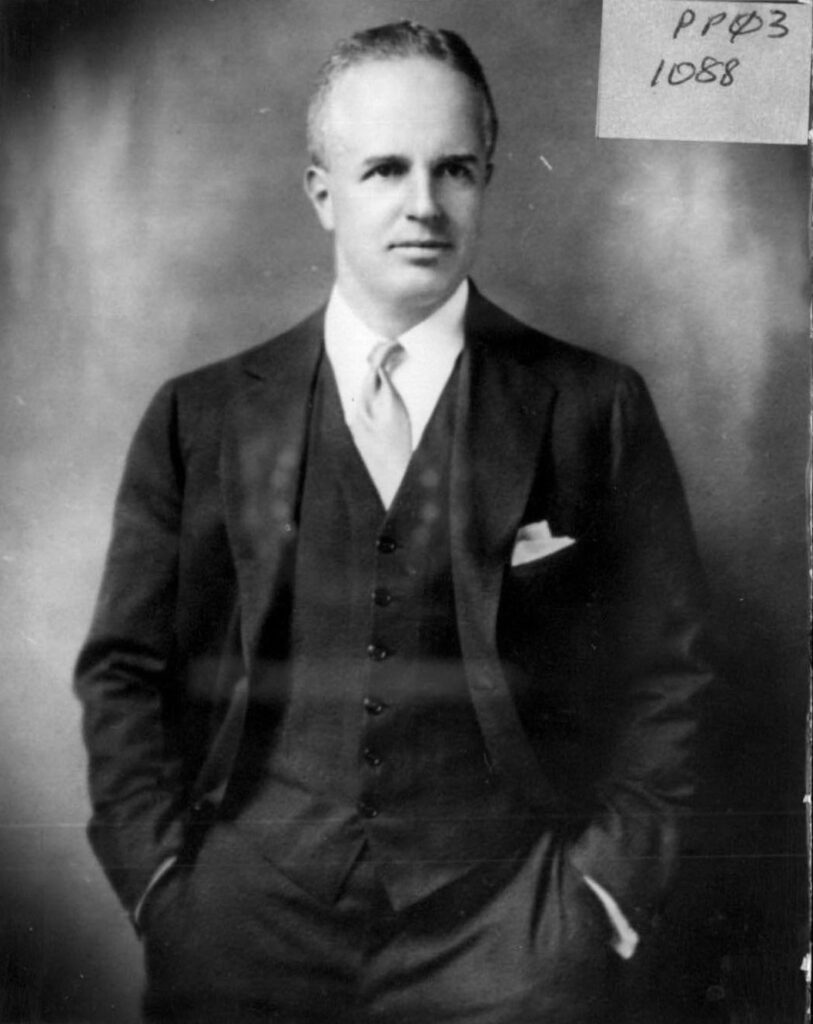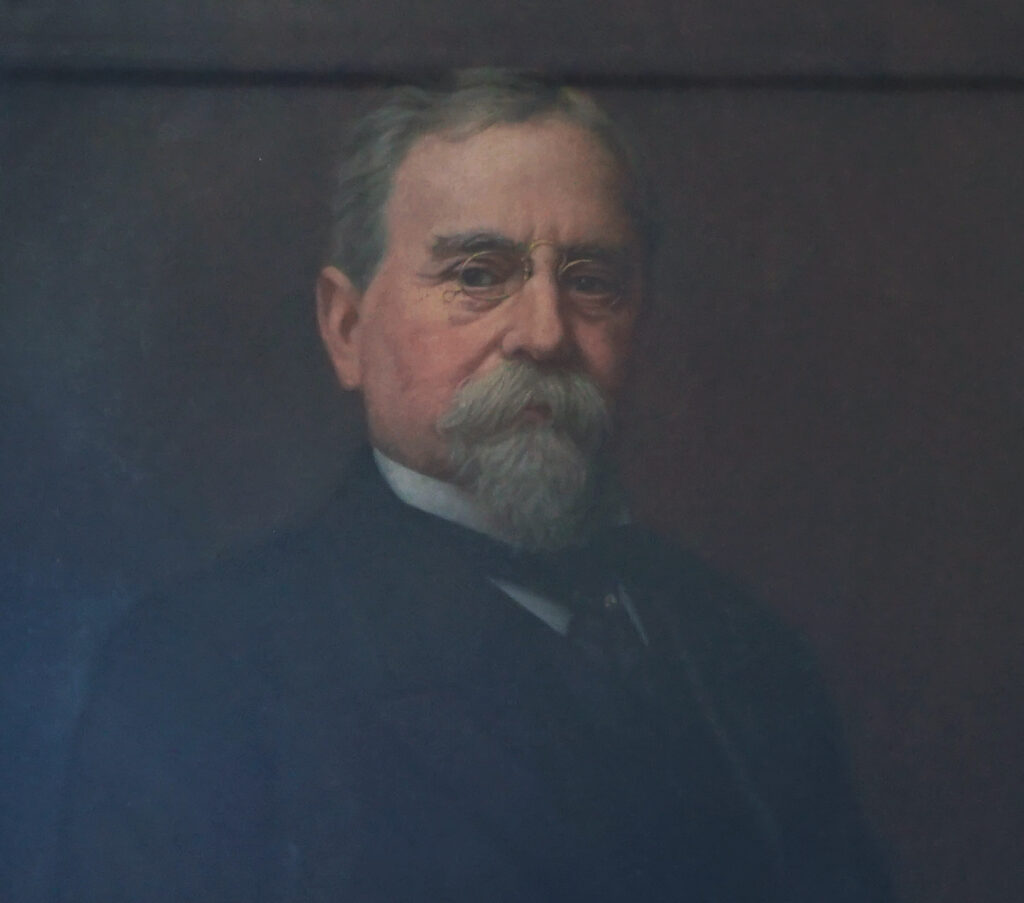
Henry Sellers McKee, who was commonly known as H. Sellers McKee, was born on March 5, 1843, in Pittsburgh’s South Side. He was the son of Thomas McKee (1800-1864), a prominent figure in the glass industry, a grocer and dry goods merchant, and the Allegheny County Treasurer for a time. His mother was Henrietta “Hetty” Zillhart (1809-1884). By the time of H. Sellers’ birth, his father was already established as a business leader.
Two of his siblings founded the family’s glass business known as McKee & Bros., while others helped it grow. His brothers included:
– Frederick (1827-1865), one of the founders
– James (1829-1855), also a founder
– William S. (1838-1872)
– Stewart (1845-1885)
Against the backdrop of Pittsburgh’s industrial boom, Sellers becomes a prominent industrialist, engaging in various industries such as glass manufacturing, railways, banking, insurance, and public utilities.
Being a member of the McKee family undoubtedly put him on a promising path. His father, Thomas, along with his brother Samuel McKee, established S. McKee & Co. around 1837, which evolved into a prominent manufacturer of window and bottle glass. Additionally, S. McKee & Co. briefly ventured into the grocery and dry goods market.
Sellers spent his formative years on the South Side of Pittsburgh. The family lived at what would later be 1005 Bingham Street starting in or before 1838. This residence remained in the family until around 1884, when Hetty McKee moved to the Northside at 139 Sheffield St. Interestingly, the South Side property eventually became home to a Pittsburgh Plate Glass factory in the 1910s.
Sellers received his business training on the South Side, shaped by the influence of his father and brothers, although their untimely deaths limited this guidance. When he was only 11, his brothers Frederick and James started F. & J. McKee. By the time Sellers turned 23, he had already lost both his father and these two older siblings.
Records indicate that his brother William McKee became involved in glass manufacturing by 1860. In 1862, Sellers is first noted as being connected to the glass industry, working as a clerk/ bookkeeper. With the death of his father in 1864 and brother in 1865, Sellers suddenly finds himself as a leading member of the firm and acting as trustee for Frederick’s estate.
On Jun 8, 1865, at the age of 22, Henry Sellers (H.S.) McKee married Jeannette E. Hartupee. Their first child, Thomas M. McKee, was born on August 13, 1866. By 1870, Sellers was living just a few blocks from his mother at 1316 Bingham St on Pittsburgh’s South Side; he later moved to 2226 Carson St., then to 230 Ridge Ave. on the North Side and finally 272 Ridge Ave. In 1870, he also welcomes his second son Andrew Hartupee McKee on August 20th. The Census lists his personal estates is $20K in that same year.
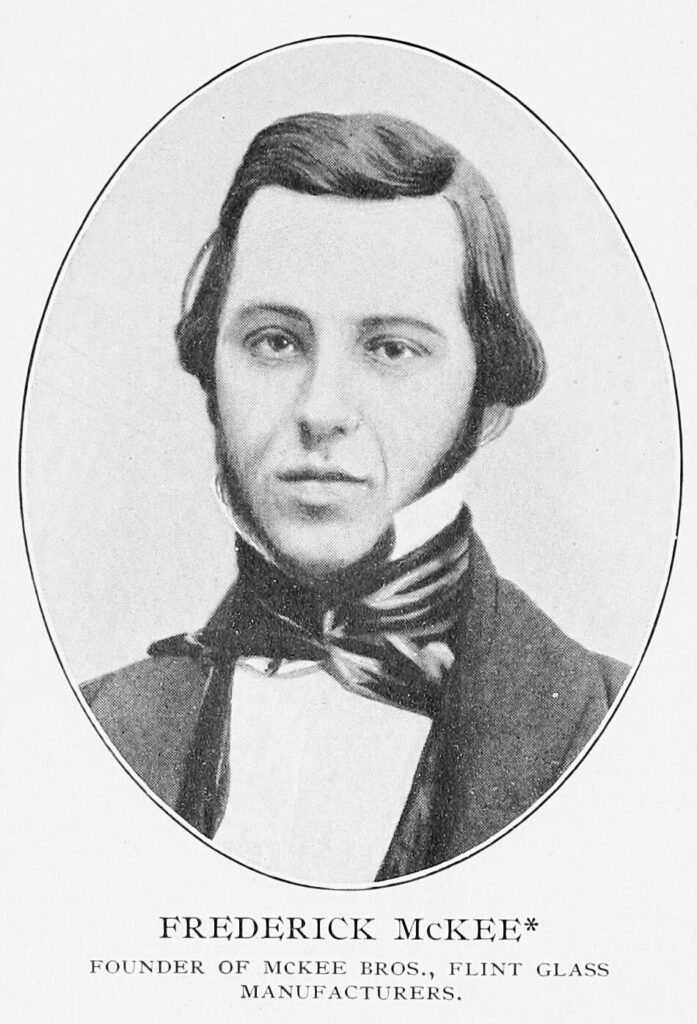
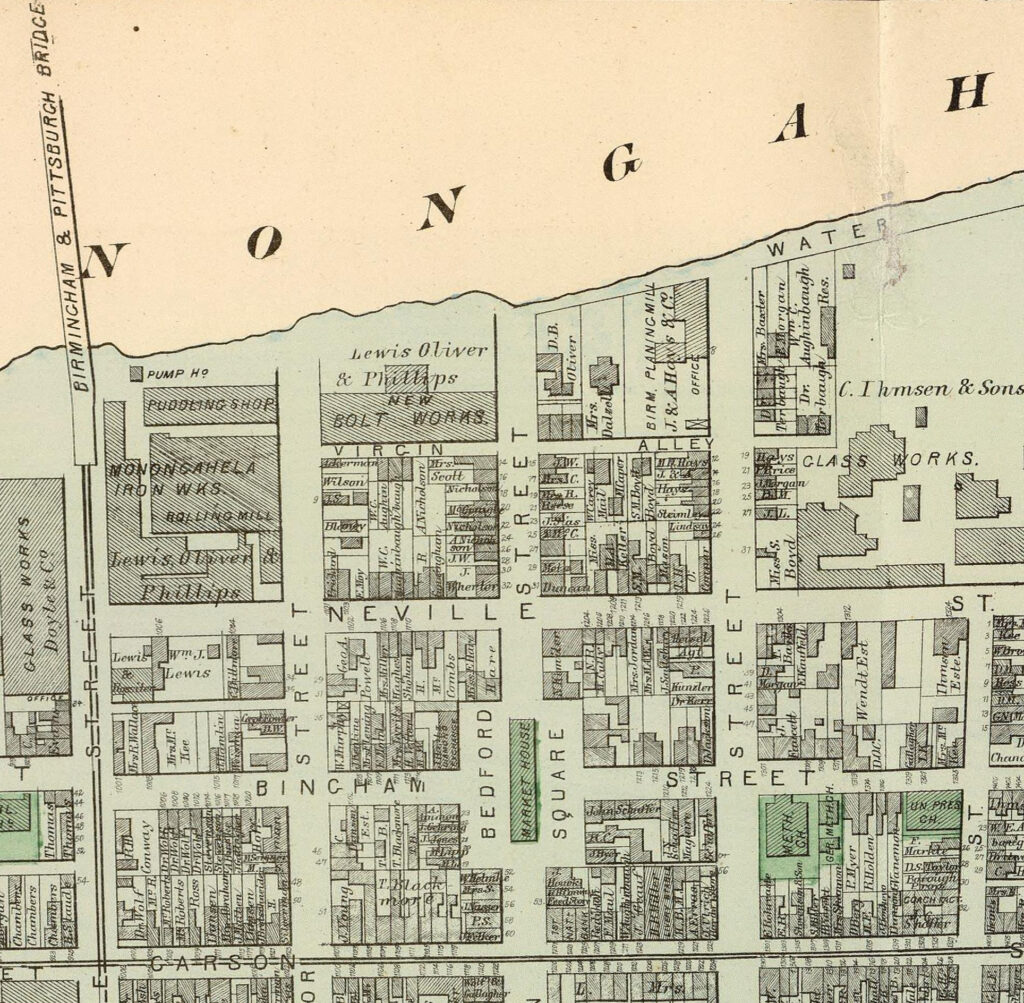
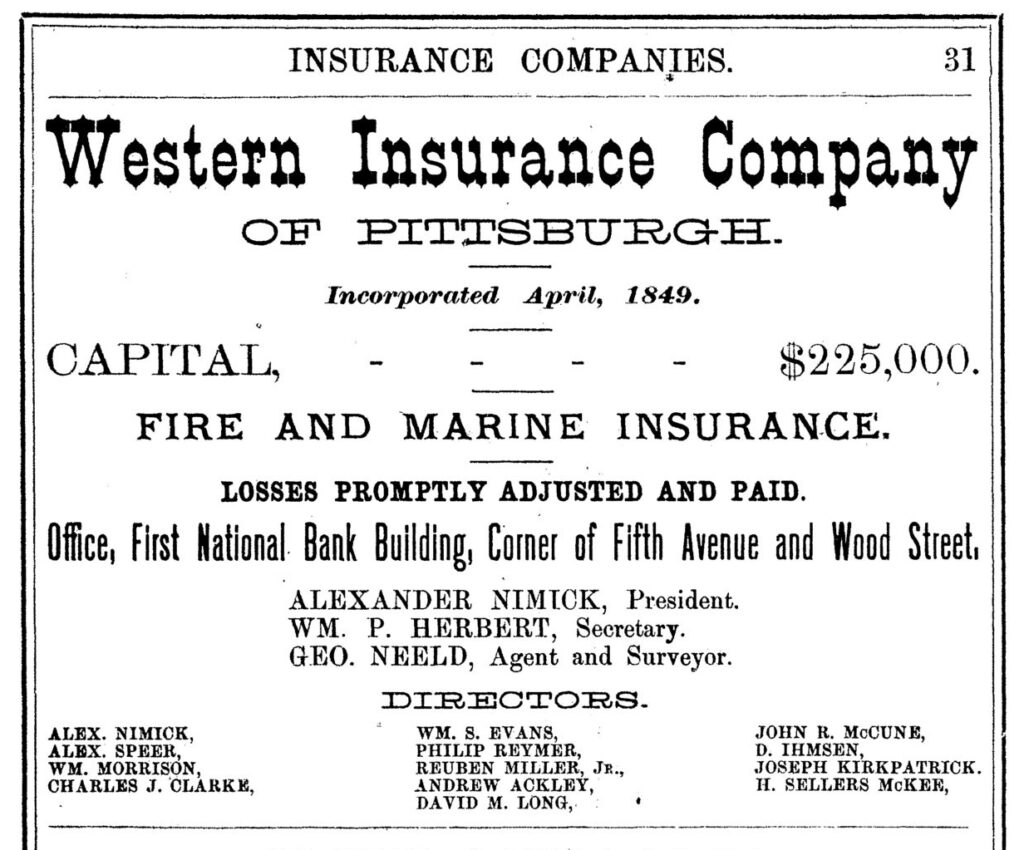
In the 1870s, Sellers became involved in a variety of business ventures. Researching reports and directories has revealed some details about these activities. It’s noteworthy that this era coincided with the onset of the Long Depression, which is generally considered to have spanned from 1873 to around 1878 or 1879.
In 1871, Sellers took a position on the board of the Western Insurance Company and relocated his family to 2226 Carson St. on Pittsburgh’s South Side. The following year, he was identified as a Director at the First National Bank of Birmingham.
A pivotal event for the glass company occurred on November 22, 1872, when his brother William McKee passed away. This left H. Sellers, then 29, and his brother Stewart, 27, as the sole remaining family members involved in the business. By 1876, the company had relocated its offices and sample room to their factory situated on 18th Street in the South Side.
Sellers continued to broaden his influence within Pittsburgh’s industrial scene. In 1877, he was listed as a Director at the Exchange National Bank of Pittsburgh. The following year, in 1878 (2), he became a Director for the Pittsburgh and Castle Shannon Railway. By 1879, Sellers was elected to the Committee on Statistics for the Pittsburgh Chamber of Commerce.
That same year, Sellers faced a frightening incident when his son Thomas accidentally shot himself with a revolver. Fortunately, after undergoing surgery, he recovered from his injury.
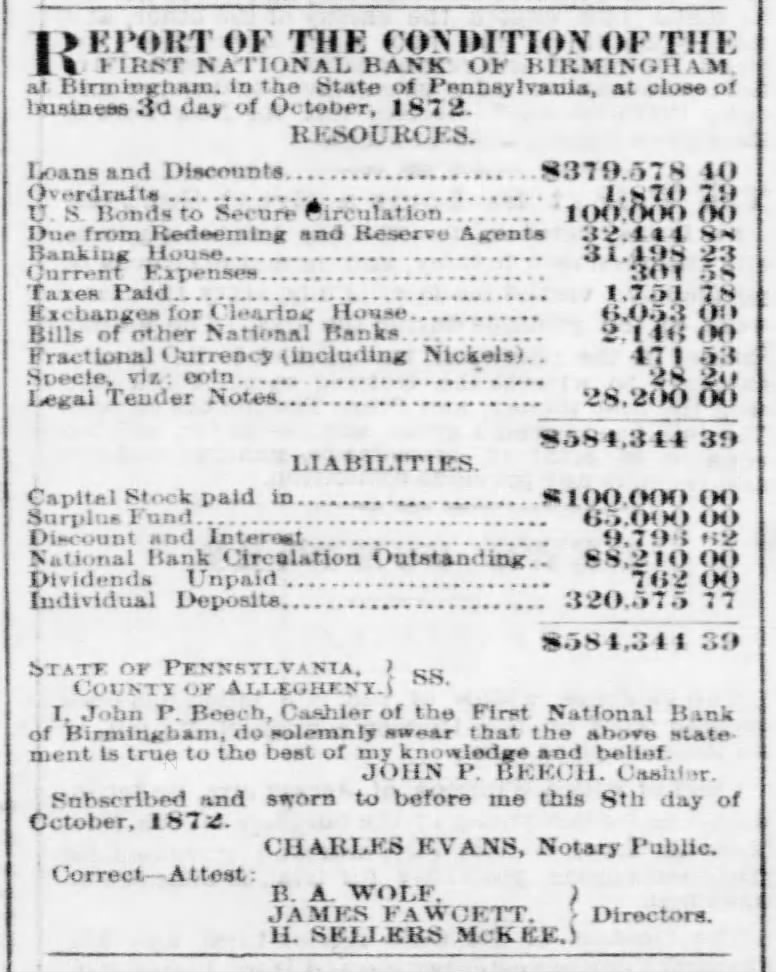
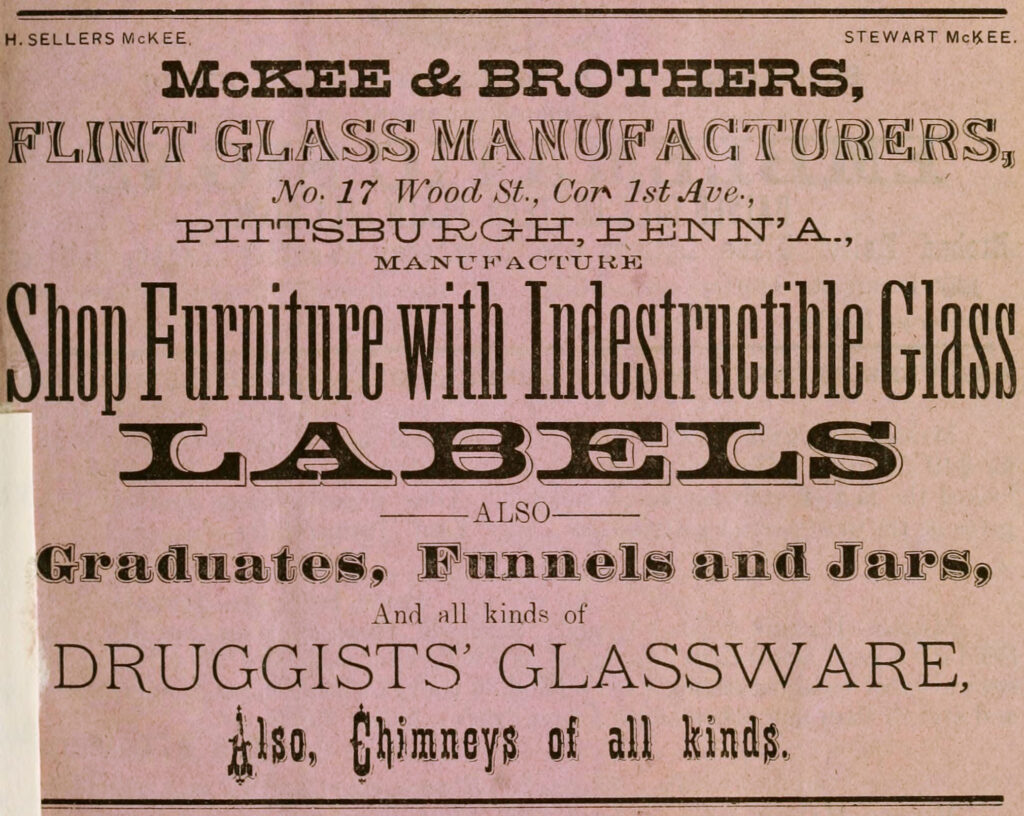
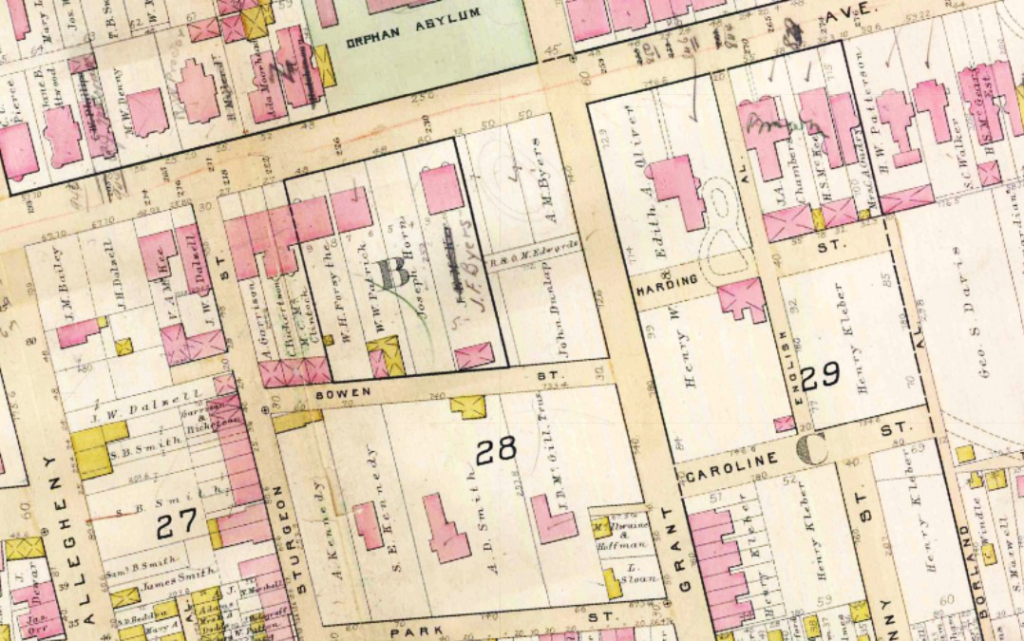
In 1881, Frederick W. McKee and his sister Melissa successfully obtained the release of their father’s estate, managed by Sellers, which was valued at around $200,000.
Charles W. Siemens files a lawsuite against Sellers in 1883 (2) with sellers also suing to recoup his investment.
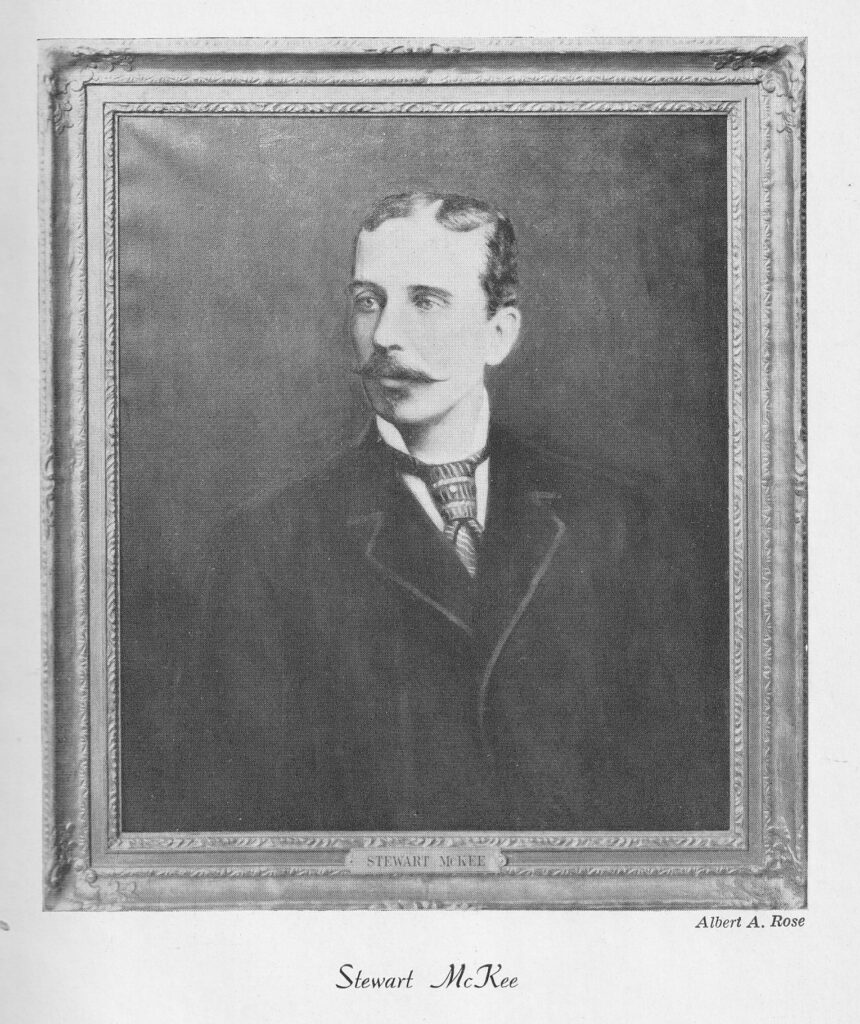
On July 31, 1887, the McKee & Bros. factory along with Kings, Sons & Co. burn down from a spark created by a passing locomotive that set fire to a shed on the Kings’ property. H. Sellers McKee makes plans to rebuild and donates $250 to the fireman disability fund for their efforts to fight against the fire. In October of that year, Dalzell Mckee, his deceased brother Stewart’s son, requests to have the McKee estate divided, including this factory. Later articles indicate the factory became the property of Virginia McKee, Dalzell’s mother, which is eventually sold to Keystone Lumber Co.
In 1887 (2), one of Sellers’ ventures, the Chartiers Natural Gas Co., was reported to manage 75,000 acres. The same year, he was noted as a director at the Standard Plate Glass Co.
The following year, 1888, Sellers partnered with James Chambers to establish the Chambers & McKee Glass Company in Jeannette, Pennsylvania, the city being named after Sellers’ wife. In 1889, he relocates the McKee & Bros. company to Jeannette.
As part of this transition in 1889, Sellers brought his son, Thomas McKee, into the McKee & Bros. partnership. Thomas marries Nellie Foster Wood on Nov 27, 1889. That year, H. Sellers and partners also set up the First National Bank of Jeannette, a real estate firm, and the Jeannette Gas Company as part of a larger plan to contribute to the growth of the burgeoning city.
In 1889, the government began an investigation into Chambers-Sellers concerning their agreements with 45 English glass blowers.
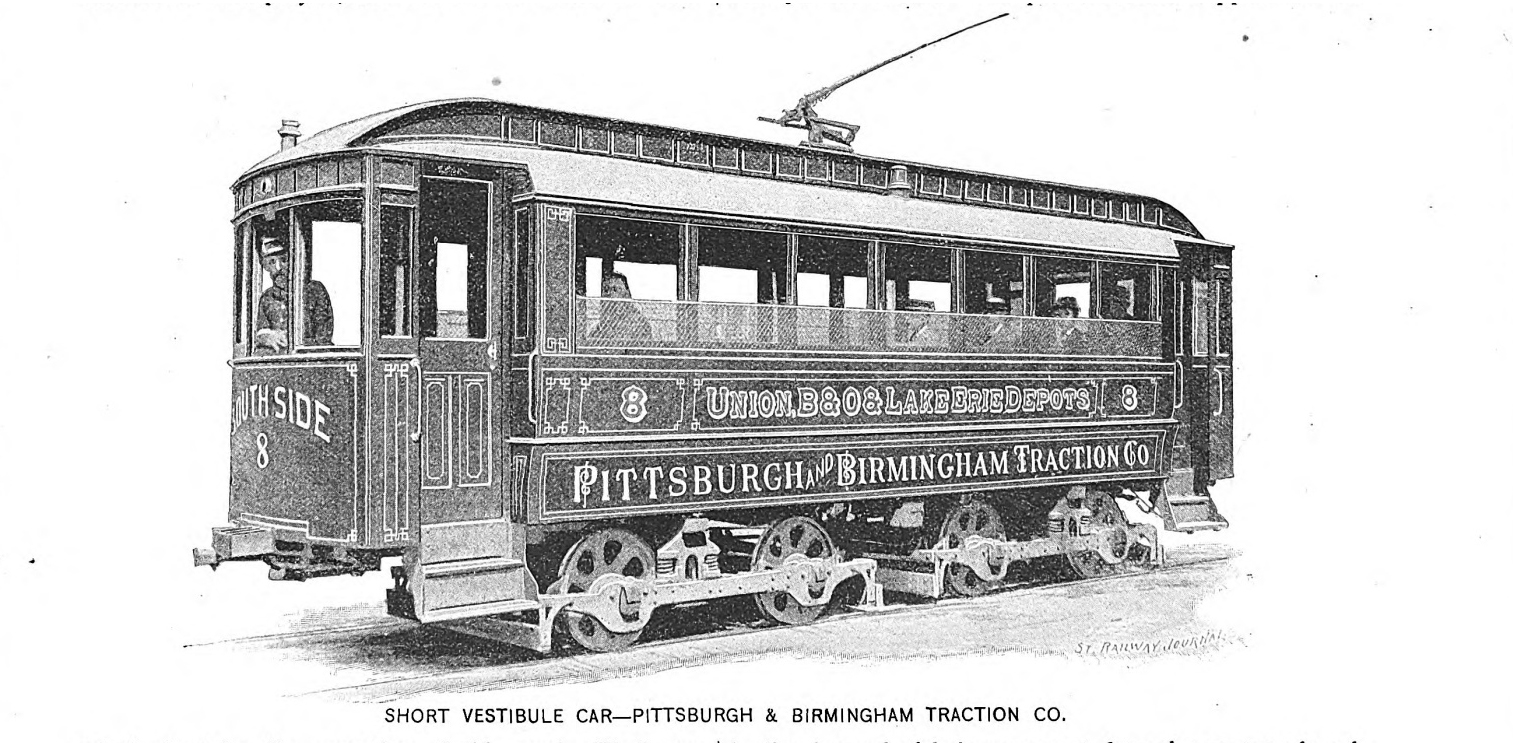
Over the next few years, Sellers broadened his interests in railroads by founding the Pittsburgh and Birmingham Traction Company. He also expanded his network in 1890 (2, 3) by incorporating the Rochester and Brighton Railway, the Thomson-Houston system, and the Buffalo and Suburban Rapid Transit Company, which would be managed by Murray Verner. In 1891, Sellers founds the Birmingham, Knoxville, and Allentown Traction Company.
In 1891, The McKeesport Fuel and Light Company of Pittsburgh, The Esplen Fuel and Light Company of Pittsburgh, The Homestead Fuel and Light Company of Pittsburgh and The Mansfield and Chartiers Fuel and Light Company are chartered with H. Sellers McKee, J. G. Ormsby, J. D. McCabe of Pittsburgh and William D. Hartupee of Charleroi as Directors.
Sellers welcomes his first grandchild, Henry Sellers II, on Feb 11, 1891. On November 21, 1892, Hart, Sellers’ youngest son, marries Lydie Sutton. They go on to have two children, Virginia (b. Aug 25, 1893) and Harriet (b. Feb 2, 1896).
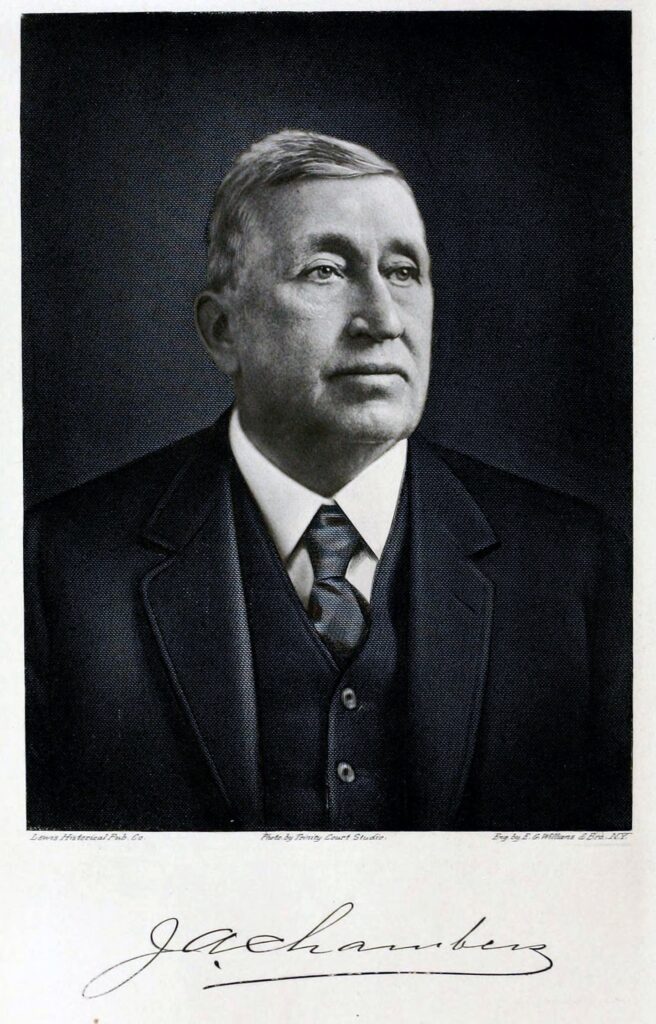
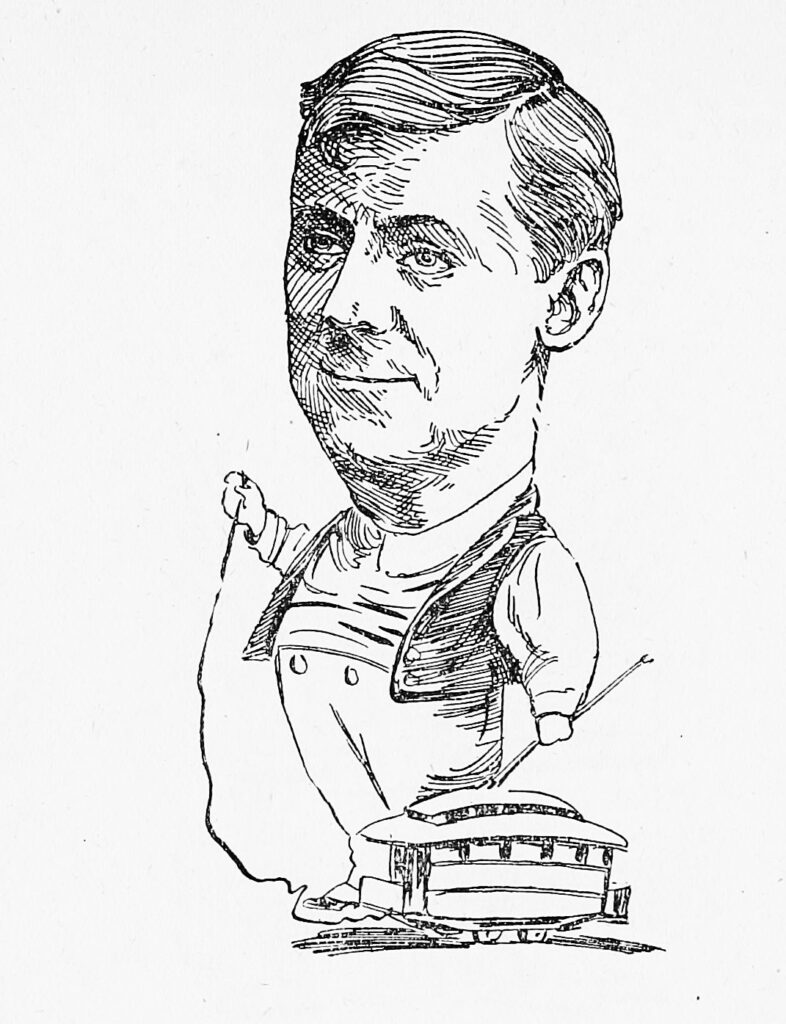
In 1892, H. Sellers, along with others, buys the Citizens Street Railway Company. Sellers rail business investments continue to be varied with him frequently changing his position.
Case in point, in 1894, Sellers McKee resigned as President of the Pittsburgh & Birmingham Traction Company due to having to focus on other business matters but is also rumored to have disposed of a large amount of his stock.
In 1895, McKee and Murray A. Verner then invest in and manage the Citizens Traction Company located in Indianapolis, IN. Verner becomes a longstanding partner in various traction line ventures with Sellers. These include the Citizens’ Passenger Railway — both Pittsburgh and Indianapolis –, Pittsburgh and Birmingham Traction Company, Rochester, N. Y. street railway syndicate and the Buffalo, N. Y. street railway system. However, amid allegations of overreach and mismanagement, the Indianapolis company is taken over by a new board in 1897. Sellers along with Verner would also face a lawsuit attached to the electrification of the Birmingham line in 1899.
During the time Sellers also continues to expand his role in other businesses with his election in 1895 as President of the Pittsburgh Window Glass Company and as a Director of the Philadelphia Company, a fuel supplier.
In 1897, Sellers is a founder of a new town called Monessen, PA along with his brother-in-law George Orlando Morgan, who married Sellers’ sister the widow Harriet McKee Lorenz, as well as James Schoonmaker and others.
In 1898, Sellers becomes President of the National Association of Pressed and Blown Glass Manufacturers and, in 1899, the Mckee & Bros. becomes part of the National Glass Company with Sellers and his son, Hart, named as Directors. The family soon exits the glass manufacturing business for good.
In 1901, the First National Bank of Birmingham, which Sellers has long served as President, is defrauded by A. J. Schroth, its Bookkeeper. Schroth admits to misappropriating $35K and is sentenced to five years.
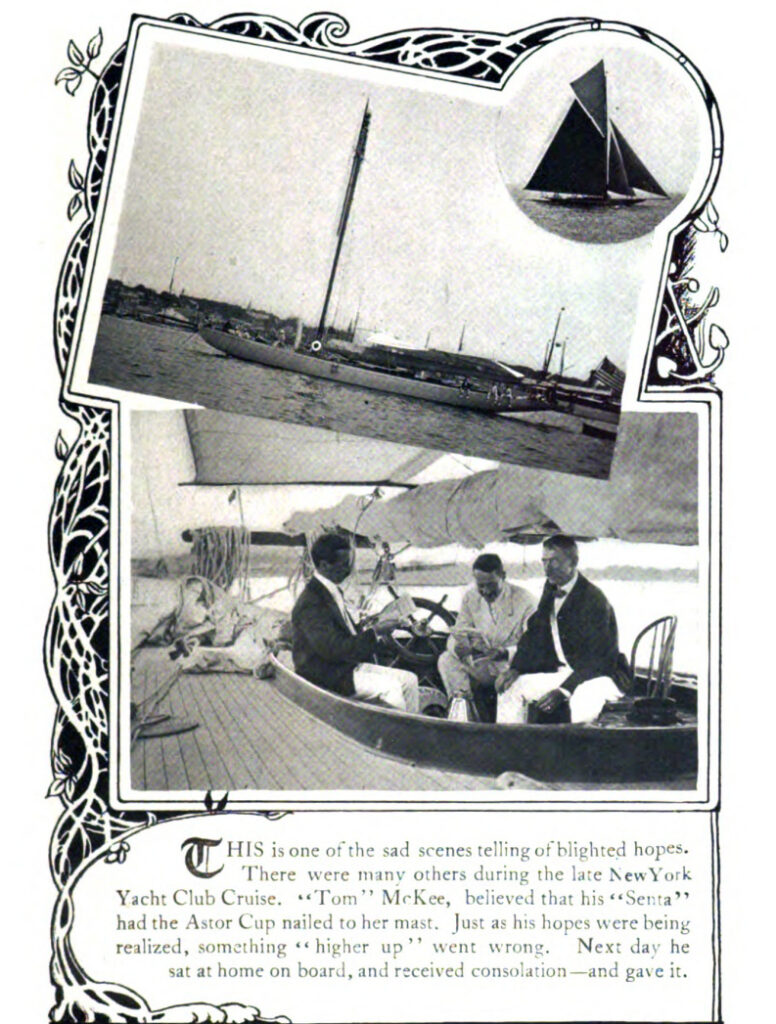
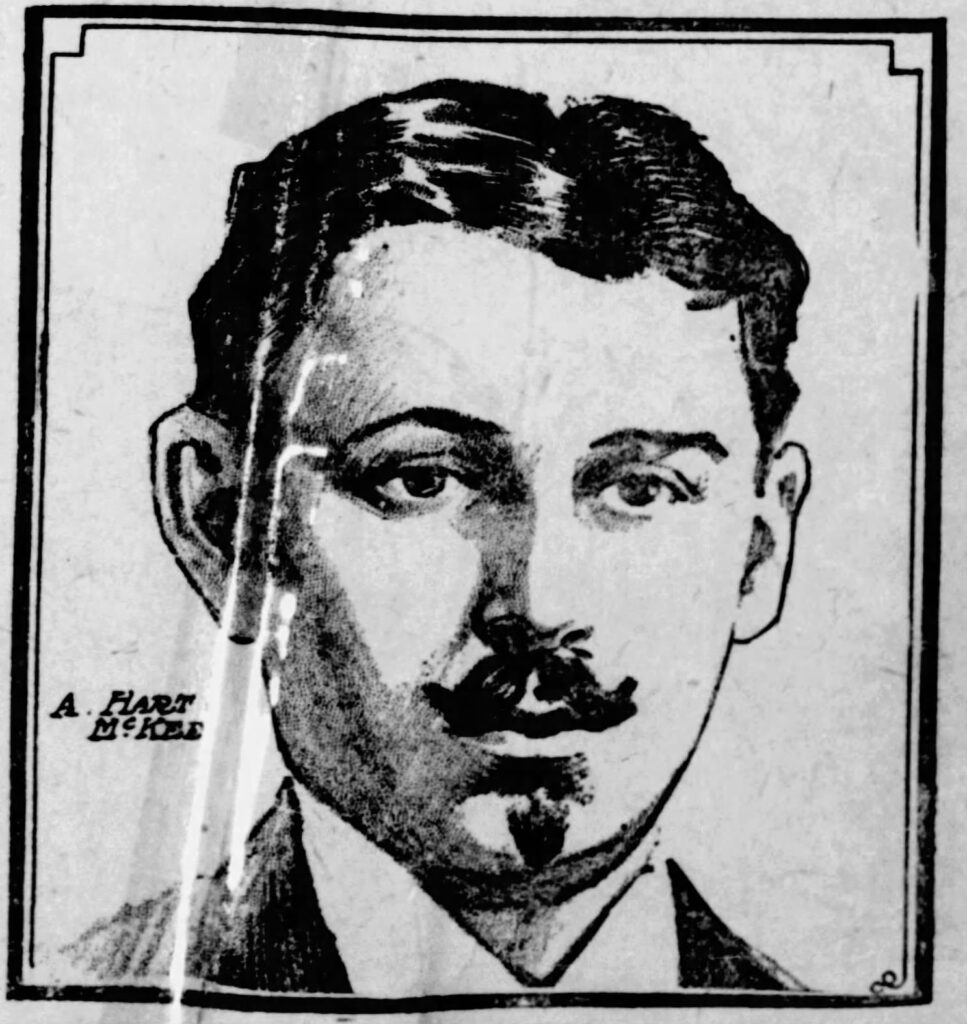
In 1904, Sellers McKee relocates to New York, NY and the reasons for the relocation is in part due to his son Hart’s many personal and business scandals that year.
One of Hart’s controversies involves his purported involvement with Genevieve Chandler Phipps, who was on the verge of divorcing her husband, Lawrence C., a nephew of Henry Phipps. When Lawrence suspects Genevieve of being unfaithful, he kidnaps their children. This incident not only casts a spotlight on the Phipps family but also highlights Hart’s ties to Genevieve. At the same time, Hart’s marriage to Lydie is nearing its end, with reports indicating a hefty settlement of $300,000. Their divorce is finalized in January of the following year, after which Hart quickly remarries, although not to Genevieve. Additionally, in 1904, Lydie’s father, Dr. Rhoads Stansbury Sutton, sues Hart for $100,000 in damages related to stock recommendations concerning the Colorado Fuel and Iron Company.
It’s no surprise that Hart’s affair with Genevieve abruptly concludes. Shortly thereafter, rumors surface about a new involvement with Cornelia Baxter Tevis, a wealthy widow whose late husband was Hugh Tevis. On November 27, 1904, Hart publicly denies these allegations. Yet just a week after finalizing his divorce, he weds Cornelia on January 11, 1905. The couple soon relocates to Paris and welcomes a son, Andrew H. Jr., born on February 4, 1906.
In 1906, Sellers comes to the defense of Harry Thaw due to his respect for his father William. Thaw would be convicted of the murder of Stanford White, an act that stemmed from White’s relationship with Thaw’s wife, Evelyn Nesbit.
In 1906 (2), Sellers McKee sells his house at 911 Ridge Avenue (Northside Pittsburgh) for $50K- $55K to Byers and declares he is leaving Pittsburgh and intends on selling all of his property.
Sellers and his wife Jeannette spend time in Europe and in 1906, their encounter with Winthrop Eugene Scarritt makes it into the author’s book, Three men in a motor car. Hart would soon need the support of his parents since, in 1907 (2), Hart McKee’s new wife seeks a divorce. She is granted custody of their son. The proceedings are well publicized and Sellers is quoted as calling her a “little vixen”. Oddly enough, Hart’s first wife supports the divorce. In 1911, the McKee family sues for custody of Hart’s son, Andre, in the Paris courts and court rules to place the son in care of Professor Chauvet.
Sellers gets involved in additional lawsuits. In 1910, Sellers sues Charles Schwab. In 1911, Henrietta McKee’s heirs sue Sellers for mismanaging his Mother’s estate. In 1912, Murray A. Verner sues Sellers McKee for $80K which he says is due to him from the dissolution of their street car partnership.
In 1909, his eldest son Thomas becomes a member of the New York Stock Exchange and, in 1913, Sellers joins Thomas’ partnership. Sadly, in 1913, Thomas and his wife Nellie separate. They would soon divorce and Nellie would marry Alfred Edward Ells on July 28, 1916.
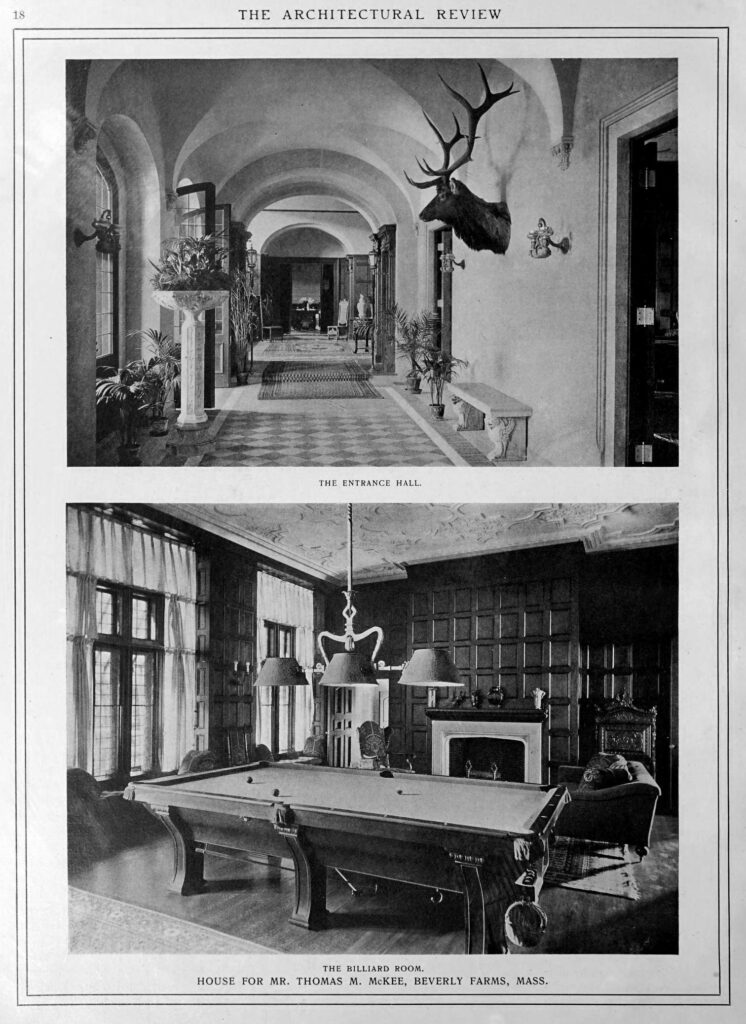
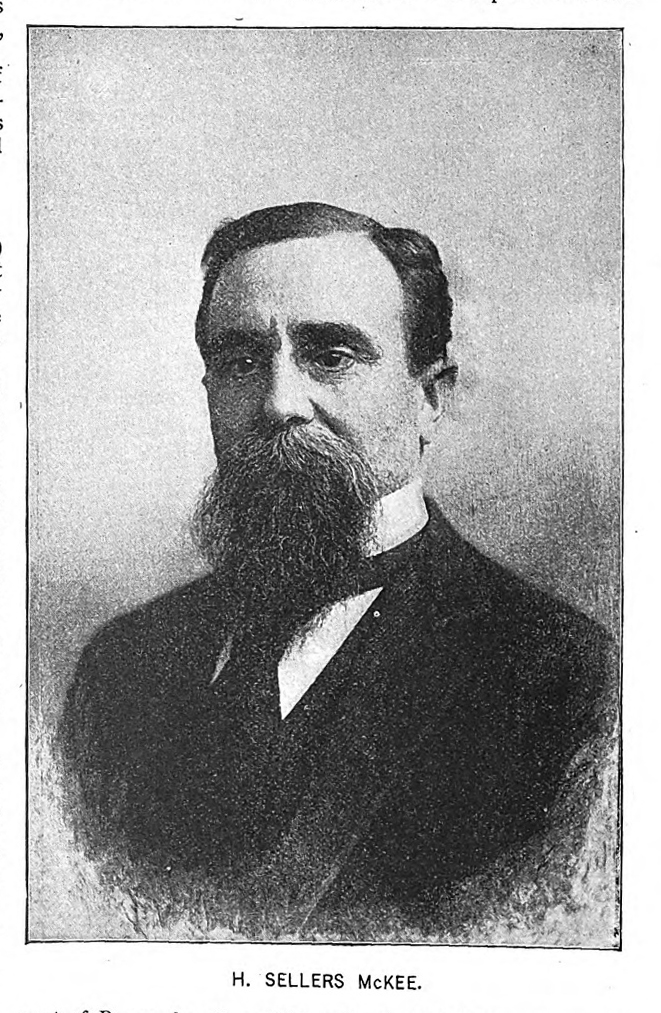
Sellers withdraws from the partnership in 1922. Thomas leaves the partnership soon after, selling his business to Charles E. Clapp in 1923.
H. Sellers McKee dies June 10, 1924 and is buried in the Allegheny Cemetery (Section: 8.5, Lot: 3, Grave: 1) along with his wife, Jeannette, who dies shortly after on November 18, 1924.
Their sons Hart and Thomas both remarry. Hart is wed to Alice Levy (b. Oct 30, 1898) on Aug 4, 1927 in New York. He dies Feb 23, 1931 at the Hotel Plaza in New York at the age of 60. He is also burried at the Allegheny family plot with the inscription on his grave stone: “Act well your part. That’s where the honor lies.”
Their eldest son Thomas remarries to Alice Wagner (b. Dec 29, 1900) in 1925. She performed with the Ziegfeld Midnight Frolic atop the New Amsterdam Theater. He dies in Manhattan, NY, on February 29, 1940 at the age of 73.
“J. B. Ford, the Plate Glass Manufacturer from Ford City, PA., has several monuments honoring his generosity and initiative, and truly deserves even more recognition. Years ago, he faced failure in New Albany, Ind., in both the plate glass and steamboat sectors, but for someone of Mr. Ford’s caliber, failure simply meant gearing up for another attempt. He moved to Pittsburgh, hoping to garner the support of Jim Chambers and Sellers McKee for his glass venture. At that time, McKee & Chambers were seen as the innovative minds of the industry, described as ‘one yard wide and all wool,’ yet they offered Mr. Ford nothing but a chilly reception.”
Companies Associated with H. Sellers McKee
Western Insurance Company
First National Bank of Birmingham (South Side, Pittsburgh)
Merchants and Manufacturer’s bank
Pittsburgh and Castle Shannon Railway
Jeannette Gas Company
Pittsburgh and Birmingham Traction Company
The Exchange National Bank, Pittsburgh
The Manufacturers and Traders National Bank, Buffalo, NY
The Rochester Street Railway Company
Buffalo Street Railway Company
Standard Plate Glass Company
South Side Gas Company
Birmingham, Knoxville and Allentown Traction Company
Citizens’ Street Railway Company of Indiana
The Mansfield and Chartiers Fuel and Light Company
Member of the South Fork Fishing and Hunting Club, Lake Conemaugh (NPS, See also Johnstown Flood of 1889)
Member of the Duquesne Club
